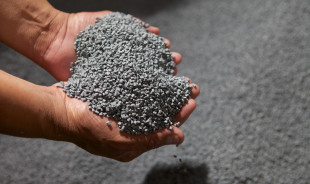We’ve recently become conscious about lead and have actually made an effort to look at lead replacements and clean up lead from our streets and pipelines. We’ve long known that lead poisoning is a serious issue among America’s children. We’ve worked on the issue, and thought that we’re comfortably moving towards a better future.
Lead in Numbers
Unfortunately, it seems that the case of lead poisoning is even worse than before. According to researchers from the California Environmental Health Tracking Program, the number of children with high levels of lead in their blood was 1.2 million as of 1999-2010. And since testing rates have declined after 2000 and kids who aren’t tested don’t get reported to the CDC, this number is likely to be much higher today.
Researchers state that about 11 states, including Florida and Arizona, aren’t testing more than 80% of their children for lead poisoning. About 40 to 60% of the children in 28 other states aren’t tested for lead poisoning either. And this is not even counting the 12 states who don’t share their data with the CDC.

The numbers are quite alarming to pose a serious health concern. How is it that so many children aren’t being tested for lead poisoning? How is it that lead replacement strategies aren’t as effective as we’d want them to be? Since testing for lead isn’t required in the country, doctors usually miss children with high levels of lead in their blood. Many cases go undetected and countless children don’t get the treatment they really need.
Lead Isn’t Safe
No level of lead is safe. Studies show that minute concentrations of 2 micrograms per decilitre are enough to lower a child’s IQ. Once this level reaches 5 micrograms, children can also suffer from serious mental and neurological damage. The CDC found that as many as 0.5 million kids had elevated levels of 5 micrograms or higher in the year 2014. These kids accounted for 4.2 percent of the total number of kids tested at the time.
However, according to Eric Roberts, the lead author of a paper published in the Paediatrics Journal, this number isn’t consistent or complete. To calculate the number of cases that might have gone unreported, Roberts and his team used data from the National Health and Nutrition Examination Survey conducted by the CDC. They combined this data with the census data on poverty, race, housing and other risk factors of lead exposure.
When the results were compared to CDC’s reported cases, it was found that more than 600,000 children with lead levels of more than 10 micrograms weren’t counted in CDC’s reporting. “People talk about the great public health victory over lead, which is true, but I think it kind of blinded us,” says Roberts.

How Did Things Go from Bad to Worse?
One of the biggest hindrances to fighting lead poisoning is that it isn’t legally required to test kids for lead in the US. In New Mexico, Washington, Colorado, Oregon and Nevada, only one out of 10 kids were treated for lead poisoning. Studies also focus on lead poisoning cases from houses built before 1950, but this has been inconsistent as well. Most of these houses can be found in the Midwest and Northeast regions, but Roberts says that the greatest number of lead poisoning cases can actually be found down South. The West isn’t doing great either.
America’s deteriorating infrastructure also poses a serious problem. Unlike Flint, water isn’t a huge problem in most states. The pipes are the main culprits. Prior to 1980, most drinking water systems used lead service lines, and as many as 6 million lead pipes are still in operation. That’s at least 10 million American households!
The Solution
Using lead substitutes to overhaul the drinking water system could cost as much as $1 trillion over the next 25 years. However, if an investment is not made now, we continue to risk poisoning children and ignore kids with high levels of lead in their blood. As seen in Flint, grassroots activism and advocating testing of lead is one of the only ways of throwing lead poisoning into the national spotlight.
Sure the fiasco was the worst infrastructure disaster the country has seen in decades. But it also showed us that homes and water systems across the country are at risk, and the issue is far worse than most suspected.










0 comments:
Post a Comment